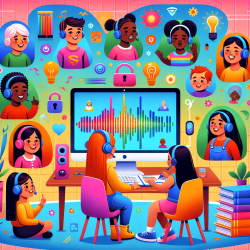In the evolving landscape of special education, the integration of technology into dyslexia screening and intervention represents a significant advancement. The research article titled "Dyslexia Screening Instrument" sheds light on how technology, specifically computer software, can play a pivotal role in identifying and supporting students with dyslexia. This blog aims to guide practitioners on leveraging the outcomes of this research to enhance their screening and intervention strategies, and encourages further exploration into the technological tools available.
Dyslexia, a common learning difficulty affecting reading, writing, and spelling skills, often goes undetected due to the lack of efficient screening processes in many educational settings. The "Dyslexia Screening Instrument" research article emphasizes the importance of early detection and the potential of computer software to streamline this process. By adopting software designed for dyslexia screening, educators can more accurately identify students who may benefit from specialized support, thereby intervening at a critical stage in their learning journey.
One of the key takeaways from the research is the software's ability to provide a comprehensive analysis of a student's reading and writing capabilities, highlighting specific areas of difficulty. This level of detail not only aids in the diagnosis of dyslexia but also informs the development of personalized intervention plans. For practitioners looking to improve their skills, familiarizing themselves with these software programs and understanding how to interpret their results is essential.
Moreover, the integration of technology into intervention strategies offers numerous benefits. Digital tools and software programs can make learning more engaging for students with dyslexia, providing interactive and multisensory experiences that traditional methods may lack. These technologies can adapt to the individual's learning pace, offer immediate feedback, and track progress over time, elements critical to effective dyslexia support.
However, the successful implementation of technology in dyslexia screening and intervention requires more than just access to software. Practitioners must seek out training and professional development opportunities to ensure they are equipped to use these tools effectively. Networking with peers and attending conferences and webinars can provide valuable insights into best practices and innovative approaches.
In conclusion, the "Dyslexia Screening Instrument" research article highlights the transformative potential of technology in the field of dyslexia support. By embracing these tools, practitioners can enhance their screening and intervention strategies, offering students with dyslexia a better path to success. To explore the original research and deepen your understanding of this important topic, please follow this link: Dyslexia Screening Instrument.










